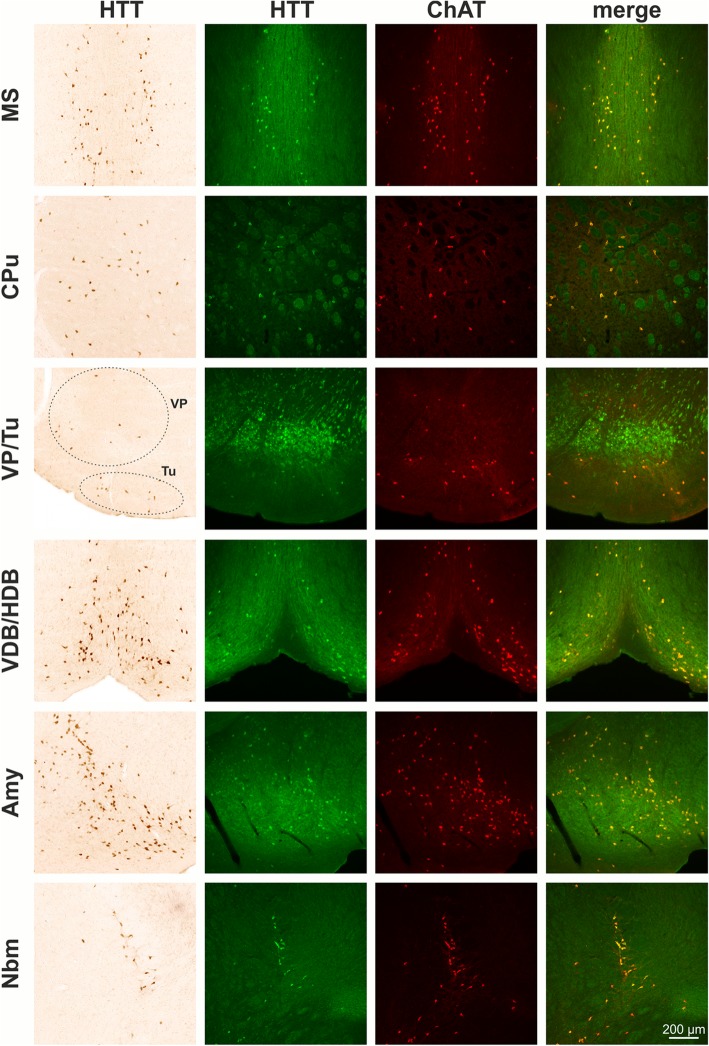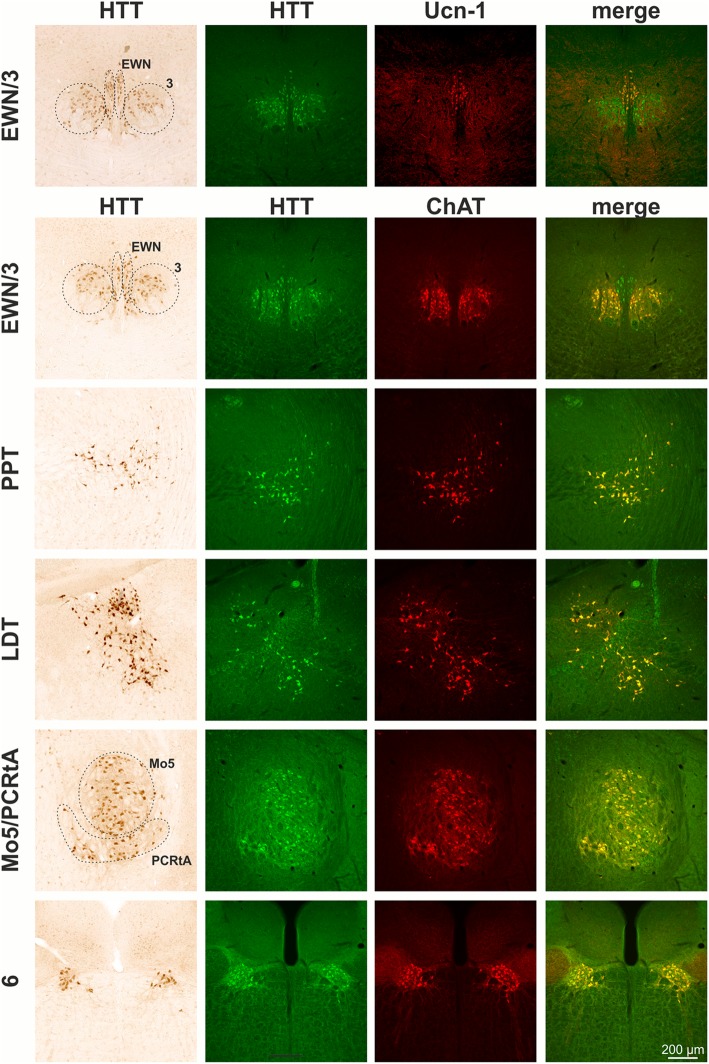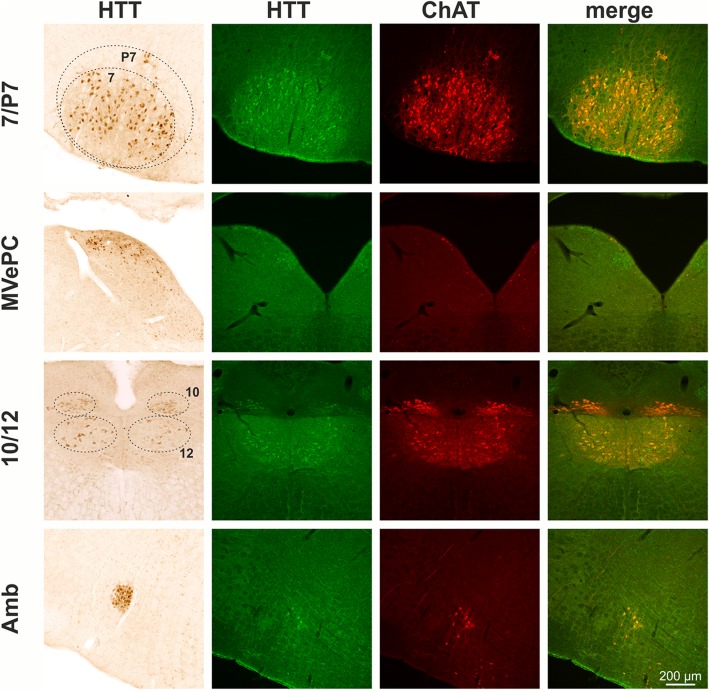Fig. 2.
Immunohistochemical detection of huntingtin (HTT) in mouse brain. HTT is highly enriched in cholinergic striatal neurons (CPu), cholinergic neurons of the basal forebrain including medial septum (MS), vertical and horizontal diagonal band (VDB/HDB) and nucleus basalis magnocellularis (Nbm) as well as in cholinergic neurons of the olfactory tubercle (Tu), ventral pallidum (VP), and amygdala (Amy). At more caudal coronal brain levels, distinct HTT immunoreactivity present in cholinergic (oculomotor nerve nucleus; 3) and in urocortin-1 positive neurons of the Edinger-Westphal nucleus (EWN), pedunculopontine tegmental nucleus (PPT), laterodorsal tegmental nucleus (LDT), motor trigeminal nucleus (Mo5), nucleus abducens (6), nucleus facialis (7) and perifacial zone (P7), the parvicellular medial vestibular nucleus (MVePC), nucleus vagus (10), the hypoglossal nucleus (12) and nucleus ambiguus (Amb)



